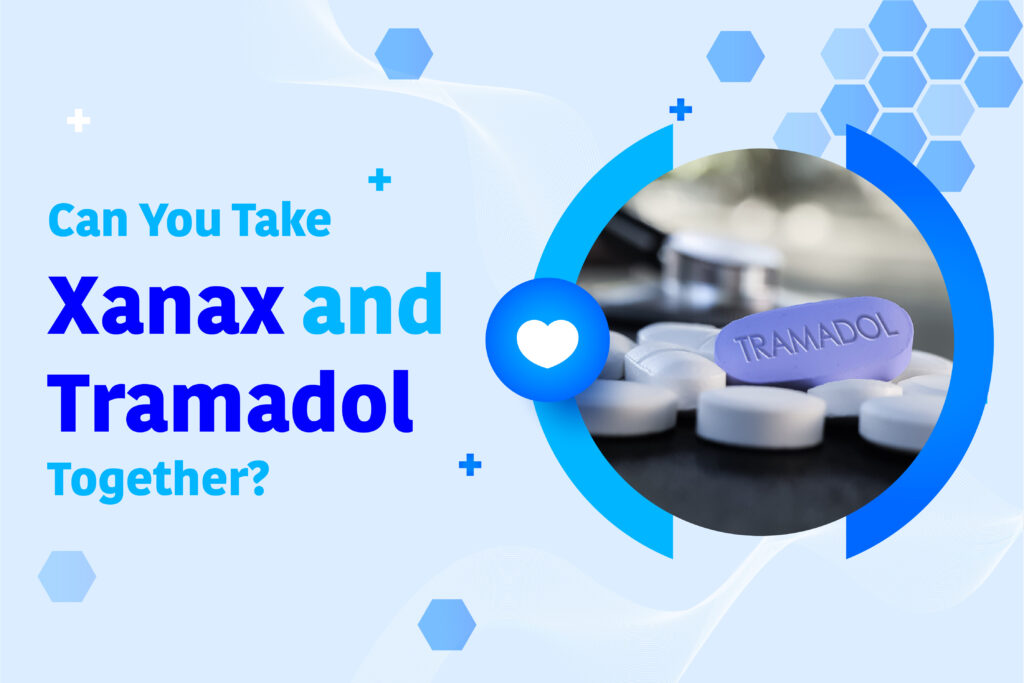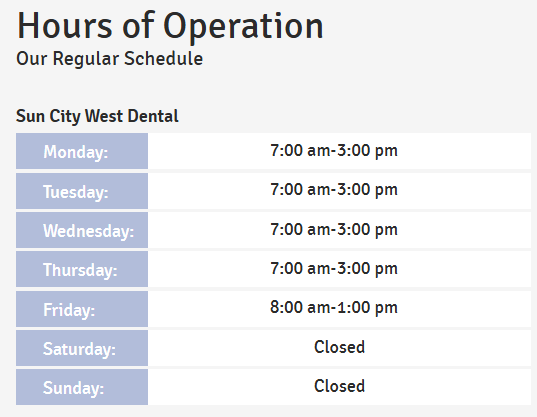Xanax and Tramadol are two of the most commonly prescribed medications in the United States. It has a boxed warning from the FDA, which alerts doctors and patients to the risk of dependence and addiction. Both are powerful drugs that can help with various conditions. However, the drugs can be dangerous if used together. Taking Xanax and tramadol together can have deadly effects, including extreme sedation and unresponsiveness, severe respiratory depression, coma, and death.
Taking Xanax and Tramadol together can cause a number of negative side effects, including drowsiness, depressed respiration, constipation, and nausea. To prevent these side effects, it is important to consult with a healthcare professional before starting to take the drugs.
Before diving into the risks of combining these medications, it’s important to understand what each drug does and how they work. In this article, we’ll explore whether it’s safe to take Xanax and Tramadol together, the potential risks, and what you need to know to stay safe.
What is Xanax (Alprazolam)?
Xanax is the brand name for alprazolam, which is a type of benzodiazepine (benzo) medication that’s often prescribed to treat anxiety and panic disorder. Like other benzos, Xanax works by attaching to and blocking the action of an inhibitory neurotransmitter in the brain called gamma-aminobutyric acid (GABA). As a result, it reduces anxiety and promotes drowsiness and feelings of calmness and euphoria.
What is Tramadol ( Ultram) ?
Tramadol is an opioid-like medication used to treat moderate to severe pain. It works by binding to opioid receptors in the brain and altering the way the body perceives and responds to pain. Tramadol also has mild effects on serotonin and norepinephrine, which can contribute to its pain-relieving properties.
Both Xanax and Tramadol are central nervous system (CNS) depressants, meaning they slow down brain activity and produce calming or sedative effects. While they can be highly effective when used as prescribed, combining them can lead to serious and potentially life-threatening complications.
Can You Take Xanax and Tramadol Together?
It’s not recommended to take Xanax and Tramadol together without medical supervision. Both drugs depress the CNS, and combining them can amplify their effects, leading to dangerous side effects. Here’s why:
Increased Sedation and Drowsiness:
Both Xanax and Tramadol can cause drowsiness on their own. When taken together, this effect is magnified, which can impair your ability to function normally. Tasks like driving or operating heavy machinery become extremely risky.
Respiratory Depression:
One of the most serious risks of combining these drugs is respiratory depression, or slowed breathing. This occurs because both medications suppress the part of the brain that controls breathing. In severe cases, respiratory depression can lead to coma or death.
Risk of Overdose:
Taking too much of a drug can result in overdose, which can be life-threatening. Overdose symptoms can include extreme drowsiness, trouble breathing, blurred vision, a loss of coordination and confusion, and depression.
If these symptoms occur, you should call 911 immediately. You should also call 911 if someone is unconscious, making gurgling noises or is not able to be awakened. Overdoses can cause breathing and heart problems, which can lead to organ failure, a coma or even death.
Enhanced Side Effects:
Both medications have their own set of side effects, which can become more pronounced when combined. These may include dizziness, confusion, difficulty concentrating, and impaired coordination.
What Are the Risks of Mixing Xanax and Tramadol?
The risks of combining Xanax and Tramadol are significant and should not be taken lightly. Here’s a closer look at the potential dangers:
1. Central Nervous System Depression
As mentioned earlier, both Xanax and Tramadol slow down brain activity. When taken together, this effect is intensified, leading to excessive sedation, slowed reflexes, and impaired cognitive function. This can make it difficult to perform everyday tasks and increase the risk of accidents.
2. Respiratory Issues
Respiratory depression is a major concern when combining these drugs. Slowed or shallow breathing can reduce oxygen levels in the blood, leading to hypoxia (oxygen deprivation). This can cause organ damage, brain injury, or even death if not addressed promptly.
3. Increased Risk of Addiction and Dependence
Both Xanax and Tramadol have the potential for abuse and dependence. Combining them increases this risk, as the pleasurable effects of the drugs may be enhanced. Over time, this can lead to Xanax Dependency and addiction, making it difficult to stop using the medications without professional help.
4. Serotonin Syndrome (Rare but Serious)
Although rare, combining Tramadol (which affects serotonin levels) with other medications that influence serotonin can lead to serotonin syndrome. This condition is characterized by symptoms such as agitation, confusion, rapid heart rate, high blood pressure, and muscle rigidity. While Xanax itself does not directly affect serotonin, the combination with Tramadol could still pose a risk in certain cases.
In addition to Xanax, combining tramadol with other drugs may increase the risk of serious health complications, including toxicity and overdose. Taking multiple depressants simultaneously floods the body with chemicals it cannot process and eliminate quickly.
Moreover, benzos can amplify the strength of opioids like tramadol and increase the risk of a fatal overdose or long-term abuse in cases of misuse or recreational use.
What Do Medical Professionals Say?
Medical professionals strongly advise against combining Xanax and Tramadol without explicit guidance from a healthcare provider. The U.S. Food and Drug Administration (FDA) and other health organizations have issued warnings about the dangers of mixing CNS depressants, including benzodiazepines like Xanax and opioids like Tramadol.
If your doctor prescribes both medications, they will carefully monitor your dosage and overall health to minimize risks. Never adjust your dosage or take these medications together without consulting your doctor first.
Never buy Tramadol without a prescription because it is highly addictive and dangerous for health. It is not safe to use without medical supervision and should only be taken if prescribed by a doctor for serious conditions.
Special Considerations
Certain factors can increase the risks of combining Xanax and Tramadol. These include:
Age: Older adults may be more sensitive to the effects of these medications.
Dosage: Higher doses of either drug can increase the likelihood of severe side effects.
Medical History: Individuals with a history of respiratory issues, liver or kidney disease, or substance abuse are at greater risk.
Other Substances: Combining Xanax and Tramadol with alcohol or other drugs can further amplify the risks.
What to Do If You’ve Taken Xanax and Tramadol Together
If you or someone you know has taken Xanax and Tramadol together, it’s important to monitor for signs of an adverse reaction. Seek immediate medical attention if you notice any of the following symptoms:
- Extreme drowsiness or difficulty waking up
- Slow or shallow breathing
- Confusion or disorientation
- Bluish lips or fingernails (a sign of oxygen deprivation)
- Loss of consciousness
Even if symptoms seem mild, it’s better to err on the side of caution and consult a healthcare professional.
Alternatives to Combining Xanax and Tramadol
If you’re taking both medications for separate conditions, talk to your doctor about safer alternatives. For example:
Non-Opioid Pain Relievers: If you’re taking Tramadol for pain, your doctor may recommend non-opioid options like acetaminophen, ibuprofen, or physical therapy.
Non-Benzodiazepine Anxiety Treatments: For anxiety, alternatives like selective serotonin reuptake inhibitors (SSRIs) or cognitive-behavioral therapy (CBT) may be effective.
Your doctor can help you find a treatment plan that addresses your needs without putting you at unnecessary risk.
Top US Doctors for Recovering from Xanax and Tramadol Addiction
1. Dr. Drew Pinsky, MD – Addiction Medicine Specialist
A well-known addiction specialist with decades of experience in treating prescription drug dependency, including Xanax and Tramadol.
2. Dr. Mark Willenbring, MD – Founder of Alltyr Clinic
A leading psychiatrist specializing in evidence-based treatment for benzodiazepine and opioid addiction.
3. Dr. Nora Volkow, MD – Director of NIDA
A neuroscientist and expert in addiction treatment, offering cutting-edge approaches to recovery.
4. Dr. Kevin Wandler, MD – Chief Medical Officer at Advanced Recovery Systems
An addiction medicine expert with a focus on personalized detox and long-term rehabilitation.
5. Dr. Paul Earley, MD – President of the American Society of Addiction Medicine
A respected addiction specialist providing comprehensive treatment for Xanax and Tramadol dependency.
Conclusion
While Xanax and Tramadol can be effective for treating anxiety and pain, respectively, combining them is not safe without medical supervision. The risks of respiratory depression, extreme sedation, and overdose are too significant to ignore. Always consult your healthcare provider before taking these medications together, and never adjust your dosage without their guidance.
If you have any concerns about your current medications or are experiencing side effects, reach out to your doctor or pharmacist. Your health and safety should always come first.
FAQ :
1. Can taking Xanax and Tramadol together increase the risk of addiction?
Yes. Both drugs have a high potential for dependence and addiction. Using them together increases the likelihood of developing substance abuse issues.
2. What are safer alternatives for pain management instead of Tramadol?
Your doctor may recommend non-opioid pain relievers such as acetaminophen, ibuprofen, or alternative therapies like physical therapy.
3. What are safer alternatives for anxiety management instead of Xanax?
Non-benzodiazepine medications such as SSRIs (Selective Serotonin Reuptake Inhibitors) or cognitive-behavioral therapy (CBT) may be effective options for managing anxiety.


